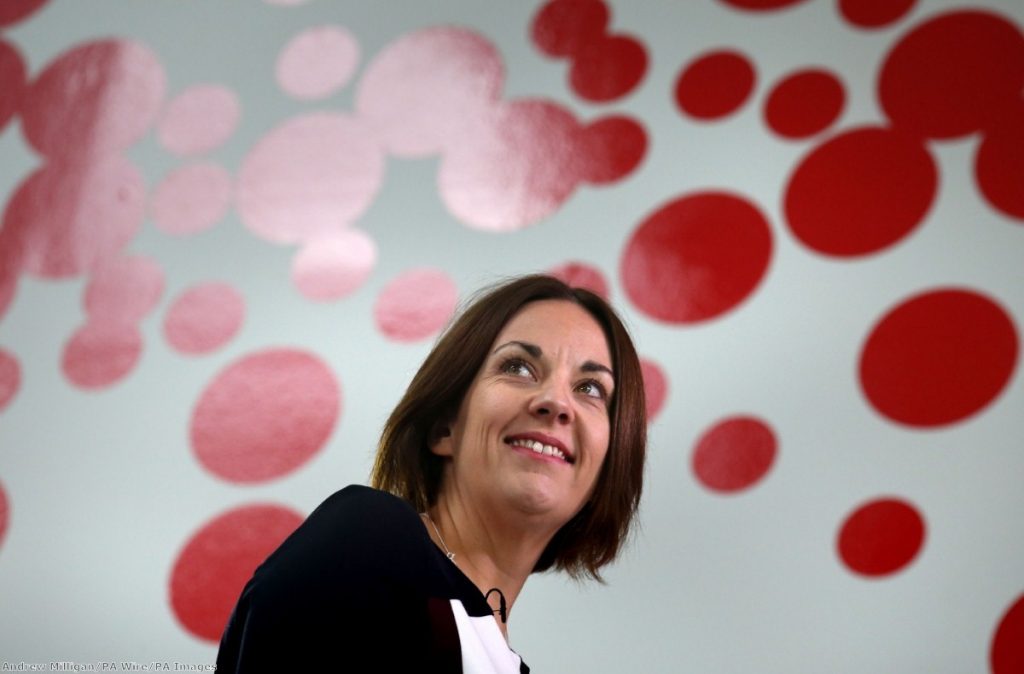By David Torrance
Rarely have the results of a local government election in Scotland been picked over so closely. All the parties are busy viewing the outcome through a Westminster constituency lens, leading the Scottish Conservatives to believe they could win as many as 15 seats next month and, perhaps even more ambitiously, Scottish Labour an additional seven.
Scotland's once-dominant party needs all the good news it can muster. Although it did badly last Thursday, it didn't do as badly as some 'pollsters and pundits' (Scottish Labour's term, not mine) had predicted. The party, therefore, is now stepping up its campaign to 'win back seats from the SNP'.
And there are plenty to win back. At the last general election, Labour famously lost 40 MPs to the nationalists, holding just Edinburgh South, ironically one of the most middle-class constituencies in the whole country. But the party's number crunchers have been hard at work and reckon they're either ahead of the SNP or within a single percentage point of them in more than a dozen more.


To repeat, that's according to a breakdown of local government results, which of course were conducted under the single transferable vote rather than first past the post electoral system. This is an art rather than a science, although a similar analysis is probably on safer ground in predicting that Edinburgh South is a two-way battle between the incumbent Ian Murray and the SNP (using the same numbers, however, Scottish Conservatives maintain they're in with a chance too).
It's "clearer now than ever before", claims Scottish Labour's election campaign manager James Kelly, that "only Labour" can defeat the SNP in "vast swathes" of Scotland. That, however, is hyperbole, as local government results, last year's Holyrood elections and general election polling clearly show the Conservatives rather better placed to do that. Not for nothing is Labour basically copying Tory campaign themes, chiefly opposition to a second referendum and the idea of 'sending a message' to the nationalists, both messages that are clearly resonating with Unionist voters.
Still, Labour can be forgiven its new bounce. Last week it got 20% of the vote to the Conservatives' 25%, a sign that a centre-left 'Unionist' vote still exists. So it's clearly making an effort: former prime minister Gordon Brown will be campaigning with former deputy prime minister Lord Prescott in Fife, while Lady Smith, widow of former leader John Smith, is supporting Ian Murray in Edinburgh South.
Not everyone who opposes a second independence referendum is prepared to 'lend' their vote to Ruth Davidson just yet, and from that Kezia Dugdale has taken a degree of heart, as her party has from the result in Glasgow, where the SNP emerged as the largest party but not with overall control as it expected. At the same time, some of the Labour spinning has got out of hand, comparing the SNP's share of the vote to that in 2015 and 2016 and concluding that the 'Sturgeon surge' has turned into the 'Sturgeon slump'.
That's more hyperbole, not least because the SNP's share of the vote and number of councillors was actually up slightly on the 2012 result – no mean feat considering local government budget cuts in the interim. But what Scottish Labour's saying is that it's down but not out, which isn't a bad philosophy when it comes to getting through the next four weeks.
David Torrance is a freelance commentator and Nicola Sturgeon's biographer. Follow him on Twitter.
The opinions in politics.co.uk's Comment and Analysis section are those of the author and are no reflection of the views of the website or its owners.









